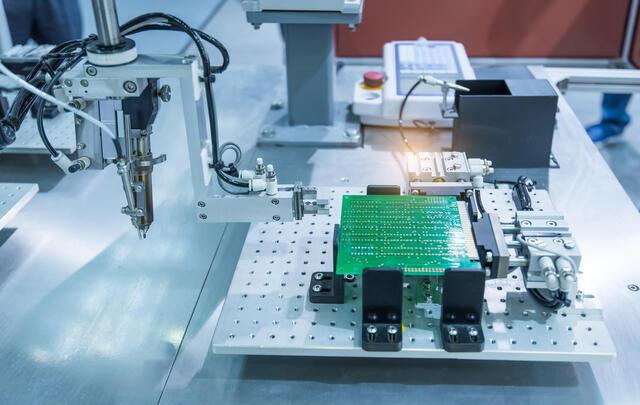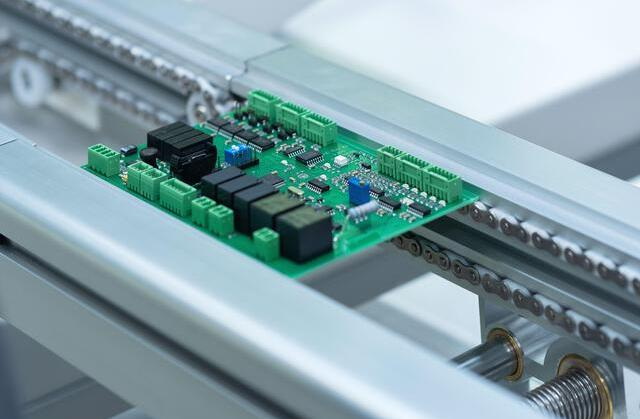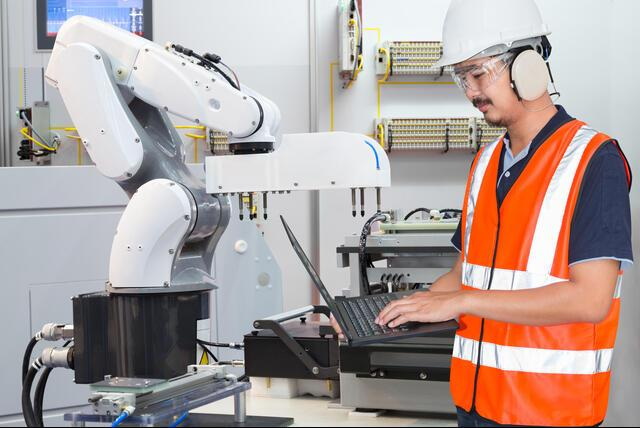Content Menu
● Introduction to SMD Mounting Machines
>> Key Components of SMD Mounting Machines
● Challenges in Using SMD Mounting Machines
>> 1. Component Placement Accuracy
>> 2. Component Damage During Placement
>> 3. Inaccurate Fiducial Recognition
>> 4. Component Pick-up and Release Issues
>> 5. High Initial Investment Costs
● Challenges in SMT Assembly Beyond Machine Operation
>> Solder Joint Issues
>> Component Placement Problems
>> Stencil Printing Issues
>> Fine Pitch Components
>> Rework and Modifications
● Solutions to Common Challenges
>> 1. Investing in Technology
>> 2. Training and Maintenance
>> 3. Quality Control
>> 4. Process Optimization
>> 5. Adapting to Component Variability
● Conclusion
● FAQs
>> 1. What are the primary causes of component misplacement in SMD mounting machines?
>> 2. How can component damage during placement be minimized?
>> 3. What role does fiducial recognition play in SMD mounting machines?
>> 4. What are the common issues with component pick-up and release in SMD mounting machines?
>> 5. How can manufacturers optimize the reflow process to prevent soldering defects?
● Citations:
Surface Mount Technology (SMT) has revolutionized the electronics industry by enabling the production of smaller, more efficient, and reliable devices. At the heart of this technology is the SMD mounting machine, which plays a crucial role in placing components onto printed circuit boards (PCBs). Despite its importance, using an SMD mounting machine comes with several challenges that manufacturers must address to ensure efficient and high-quality production.

Introduction to SMD Mounting Machines
SMD mounting machines, also known as pick-and-place machines, are essential for the assembly of surface mount devices (SMDs) onto PCBs. These machines automate the process of picking components from reels or trays and placing them accurately onto the PCB. The precision and speed of these machines are critical for maintaining high production rates and ensuring the quality of the final product.
Key Components of SMD Mounting Machines
1. Pick-and-Place Heads: These are responsible for picking up components and placing them onto the PCB. The heads must be calibrated accurately to ensure precise placement.
2. Vision Systems: Advanced vision systems help in recognizing components and PCBs, ensuring accurate alignment and placement.
3. Feeders: These supply the components to the machine. Proper feeder setup is crucial for smooth operation.
Challenges in Using SMD Mounting Machines
1. Component Placement Accuracy
Ensuring that components are placed accurately on the PCB is a significant challenge. Misaligned components can lead to short circuits, open circuits, or reduced performance. To overcome this, manufacturers must invest in high-precision placement machines and regularly calibrate them. Training operators on the importance of placement accuracy and maintaining equipment is also crucial.
2. Component Damage During Placement
Components can be damaged during the placement process due to improper handling or machine malfunction. This can lead to failures in the PCB later on. To mitigate this, manufacturers should ensure proper operation of the machine, perform regular maintenance checks, and use high-quality components.
3. Inaccurate Fiducial Recognition
Fiducial recognition is essential for identifying the exact location and orientation of a PCB on the machine. Problems with the recognition system can lead to inaccuracies in PCB placement. Regular cleaning of the camera lens, accurate calibration, and software maintenance are necessary to prevent these issues.
4. Component Pick-up and Release Issues
Issues with picking up or releasing components can halt production. Causes include inadequate vacuum or nozzle pressure and worn-out nozzles. Regular maintenance checks and replacing worn parts can resolve these problems.
5. High Initial Investment Costs
Transitioning to SMT assembly requires significant upfront investment in specialized equipment like pick-and-place machines, solder paste printers, and automated inspection systems. This results in higher startup costs compared to traditional through-hole assembly methods.

Challenges in SMT Assembly Beyond Machine Operation
Solder Joint Issues
Solder joint issues, such as incomplete solder joints, solder bridges, or tombstoning, are common challenges in SMT assembly. These issues can be addressed by ensuring proper solder paste deposition and stencil design, optimizing the reflow profile, and improving solder mask design to prevent bridging[1][4].
Component Placement Problems
Misaligned or skewed components during placement can be resolved by using accurate pick-and-place machines with vision systems for precise alignment, verifying component specifications and orientation before placement, and improving nozzle selection and calibration for consistent component handling[1].
Stencil Printing Issues
Insufficient solder paste or smearing of paste can be mitigated by ensuring proper stencil design and maintaining the solder paste printer to prevent clogs and uneven deposition[1].
Fine Pitch Components
Assembling fine-pitch components requires advanced skills, enhanced vision systems, and precise equipment to handle the ultra-small sizes reliably. Challenges with fine-pitch components include the risk of bridging and insufficient solder joints due to the tight spacing between leads[5].
Rework and Modifications
Reworking or modifying already assembled SMT PCBs is challenging due to the compact packages and leadless nature of many SMT components. This may require complete disassembly and reassembly, making frequent design changes impractical for high-volume production[5].
Solutions to Common Challenges
1. Investing in Technology
- High-Precision Machines: Use advanced pick-and-place machines with enhanced vision systems for precise component placement.
- Regular Calibration: Ensure that machines are regularly calibrated to maintain accuracy.
- Automated Inspection: Implement automated optical inspection (AOI) systems to detect defects early in the process.
2. Training and Maintenance
- Operator Training: Train operators on the importance of accurate placement and machine maintenance.
- Regular Maintenance: Perform regular checks on machines to prevent malfunctions and ensure optimal performance.
3. Quality Control
- High-Quality Components: Use components that are less prone to damage during placement.
- Proper Storage: Store components in appropriate conditions to prevent moisture contamination and other environmental damages.
4. Process Optimization
- Reflow Profile Optimization: Ensure that the reflow process is optimized to prevent soldering defects like bridging or insufficient solder joints.
- Stencil Design: Use high-quality stencils designed specifically for the PCB layout to ensure consistent solder paste application.
5. Adapting to Component Variability
- Component Package Compatibility: Address incompatibility between component packages by using advanced pick-and-place machines that can handle varying lead pitches or package heights[3].
- Inspection Techniques: Adopt higher-precision inspection techniques, such as AOI, to detect placement issues before soldering[3].
Conclusion
SMD mounting machines are indispensable in modern electronics manufacturing, offering high precision and efficiency. However, challenges such as component placement accuracy, component damage, and high initial investment costs must be addressed. By investing in advanced technology, maintaining equipment, and optimizing production processes, manufacturers can overcome these challenges and achieve high-quality SMT assembly.

FAQs
1. What are the primary causes of component misplacement in SMD mounting machines?
- The primary causes include incorrect component calibration, damaged feeders, and inadequate machine maintenance. Regular calibration and maintenance can prevent these issues.
2. How can component damage during placement be minimized?
- Component damage can be minimized by ensuring proper machine operation, performing regular maintenance checks, and using high-quality components that are less prone to damage.
3. What role does fiducial recognition play in SMD mounting machines?
- Fiducial recognition is crucial for identifying the exact location and orientation of a PCB on the machine. It ensures accurate placement of components by aligning the PCB correctly.
4. What are the common issues with component pick-up and release in SMD mounting machines?
- Common issues include inadequate vacuum or nozzle pressure and worn-out nozzles. Regular maintenance checks and replacing worn parts can resolve these problems.
5. How can manufacturers optimize the reflow process to prevent soldering defects?
- Manufacturers can optimize the reflow process by ensuring a proper solder paste metal-to-flux ratio, using a suitable reflow profile, and maintaining precise temperature control during the preheat, soak, reflow, and cool-down zones.
Citations:
[1] https://www.pcb-hero.com/blogs/lisas-column/surface-mount-technology-common-problems-and-solutions-for-efficient-smt-assembly
[2] https://www.macdermidalpha.com/sites/default/files/2021-09/ALPHA%20SMT%20Troubleshooting%20Guide%20EN%2001Jun20%20BR_0.pdf
[3] https://www.x-pcb.com/challenges-of-smd-overcoming-the-obstacles-in-modern-electronics/
[4] https://www.protoexpress.com/blog/common-errors-surface-mount-technology-smt/
[5] https://www.pcbjhy.com/blog/pros-and-cons-of-smt-pcb-assembly/
[6] https://jhdpcb.com/blog/efficient-smt-assembly/
[7] https://rootsems.com/advantages-and-disadvantages-of-surface-mount-technology/
[8] https://fctassembly.wordpress.com/technical-resources/technical-papers/smt-assembly-challenges-and-proven-solutions-for-improving-yields/
[9] https://www.vse.com/blog/2022/03/15/8-common-smt-placement-issues-and-solutions/
[10] https://www.allion.com/tech_syst_smt/
[11] https://www.eevblog.com/forum/manufacture/lose-smd-parts-and-picknplace-machines/
[12] https://www.viasion.com/blog/common-challenges-in-smt-assembly-and-solutions/
[13] https://www.andwinmcpcb.com/why-do-smt-machines-experience-component-rejection-issues/
[14] https://www.reddit.com/r/EngineeringPorn/comments/11zw5lt/surfacemount_device_smd_assembly/
[15] https://www.andwinmcpcb.com/smt-production-process-common-issues-and-challenges/
[16] https://www.bigmateph.com/what-are-the-common-challenges-of-smt-and-how-to-overcome-it/
[17] https://circuitcardassembly.com/blog/new-challenges-in-smt-technology/
[18] https://www.linkedin.com/pulse/oem-common-problems-solutions-smt-assembly-processing-aimee-huang
[19] https://www.myemssolutions.com/the-most-common-smt-errors-during-the-manufacturing-process/
[20] https://jlcpcb.com/blog/challenges-solutions-reflow-soldering




















